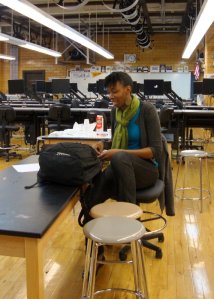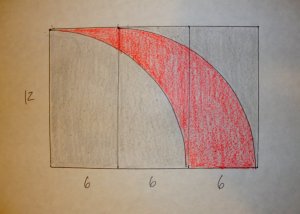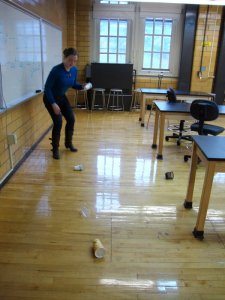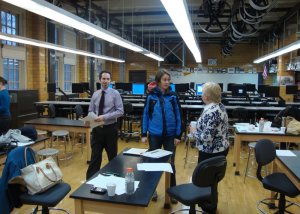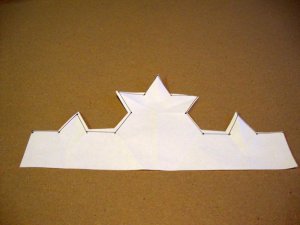 After attending a brilliant MoMath talk on Mathematical Origami given by Erik Demaine, I have been folding, cutting, and taping more than I ever thought I would. Here are a few of the ways I have been inspired. In addition, I have also posted some folding photos on my facebook page.
After attending a brilliant MoMath talk on Mathematical Origami given by Erik Demaine, I have been folding, cutting, and taping more than I ever thought I would. Here are a few of the ways I have been inspired. In addition, I have also posted some folding photos on my facebook page.
Intoduction: Some Basic Mathematical Folding
Basic Folds Simple demonstrations of the basic folds: a line through two points; midpoint of a segment; perpendicular bisector of a segment; angle bisector of an angle.
Incenter of a Triangle Use basic folds to find the incenter of a triangle!
Circumcenter of a Triangle Use basic folds to find the circumcenter of a triangle!
Centroid of a Triangle Use basic folds to find the centroid of a triangle!
Introduction: The One-Cut Challenge
One-Cut Challenge: Triangles Start investigating the one-cut problem by playing around with triangles.
One-Cut Challenge: Quadrilaterals Investigate the one-cut problem with squares, rectangles, and other quadrilaterals.
Fun with One Cut: Exploring some fractal folding and cutting.
Time 2000 — Fun With One Cut: My workshop on mathematical folding at the 2013 TIME 2000 conference.
 Miscellaneous Folding
Miscellaneous Folding
Paper Pyramids: Turning triangles into solids!
Foam Pyramids: Trying out a new medium.
Foam Tables: Folding inspired by the American Invitational Mathematics Exam (AIME)!
Fractal Origami: Turn A1 paper into Pythagoras’s Tree!
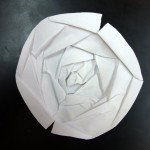 Math Art!
Math Art!
Math Art: Paper Cut-Outs: A lovely student-created cut-out; accidental art in math exploration.
Math Art: Smashing Cones: Pretty soon we were cutting, taping, and smashing cones!
Math Photo: A Peck of Paper Pyramids
Applications of Mathematical Origami
Real Life Transformers: An amazing application of origami; truly revolutionary thinking!
Folding Steel: Another innovative application of mathematical origami.
Automatic Origami: Check out this origami that unfolds itself!
Other Resources
“How to Fold It“, a book and website by Joseph O’Rourke, Smith College.
 Desmos is a powerful, versatile, and free online graphing calculator.
Desmos is a powerful, versatile, and free online graphing calculator.